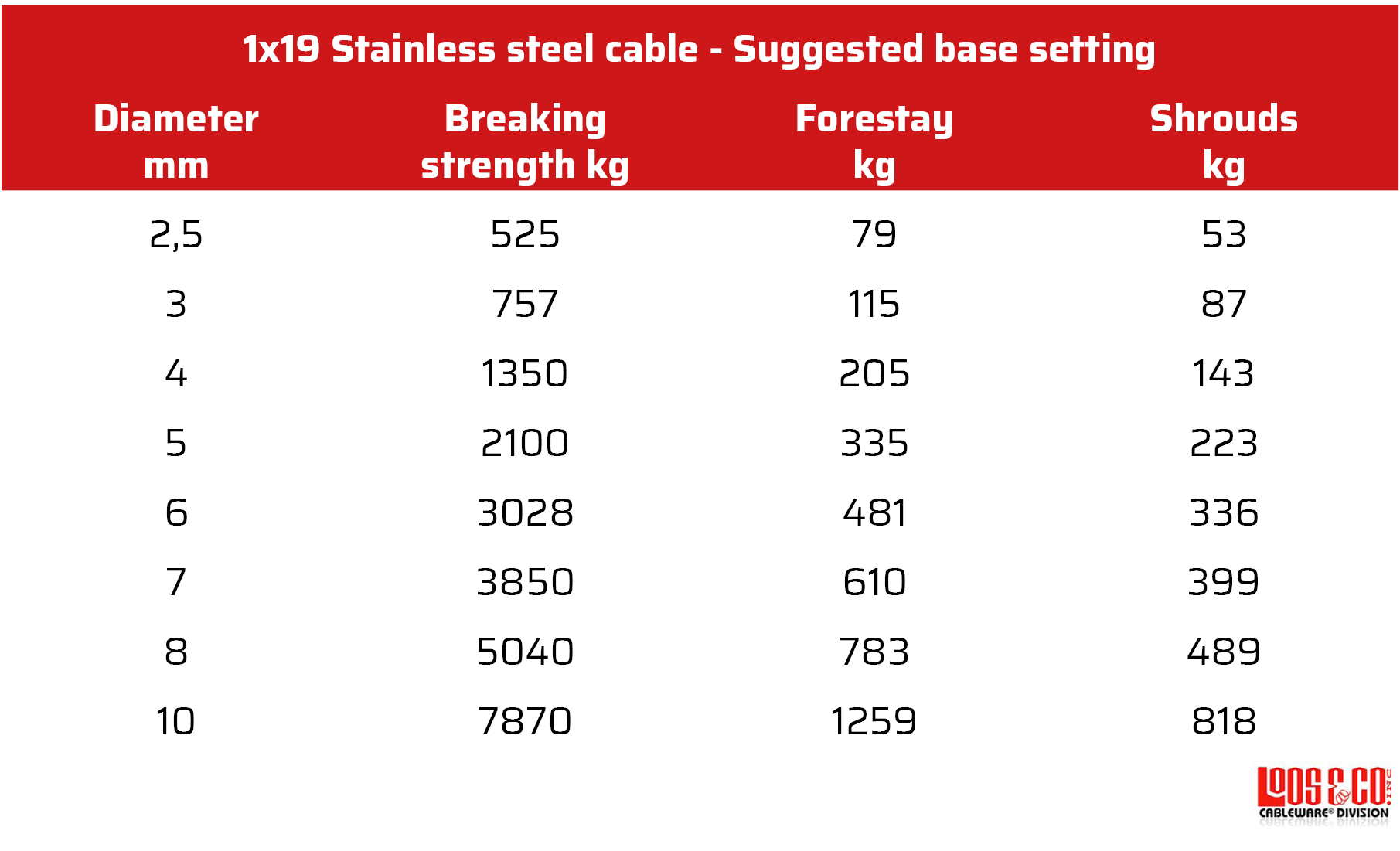What is the right rig tension for my boat?

What is the right rig tension for my boat?
Tuning your mast with the correct shroud tension is an important part of your boat trim because of the use of mast bend to control the sail shapes under different wind conditions.
Mast bend will also affect the shape and trim of your jib because mast adjustment generally affects forestay tension. The most important benefit from having the right tension is limiting the sag of the forestay. Without the proper tension on the forestay the jib luff will fall to leeward, seriously degrading the upwind performance.
A slack rigging will also be more punishing on the hull, than a properly adjusted tight rig. Insufficient tension will not reduce the loads transmitted in the hull. Slack rigging will punish the spar and rigging needlessly by allowing excessive movement, chafe and shock loading. Therefore it’s important to have proper rig tension.
How much tension do I need?
In general we advise to use the tension requirements provided by the boat, mast or sail manufacturer. The following general comments can be used as a basis for tuning the rig, when there are no specific requirements are provided by the sailmaker.

Masthead rig
Forestay tension: It’s preferred to have as much as tension as possible when you have a masthead rig. In general it should be possible to use as much as 15% of the breaking load of the cable. Make sure that the backstay tension is adjusted to maintain a straight mast.
Shroud tension: The initial rigging tension should be high enough that the leeward shrouds do not slack when sailing up wind in some proper wind conditions. The exact tension can be found during a few trial runs under sail. If you have found the right tension then a Loos Tension Gauge can be used to measure and maintain the right value. For many boat designs a shroud tension of 10-12% of the breaking strength of the cable is adequate.
Fractional rig
Forestay tension: When sailing with a fractional rig the forestay doesn’t go to the top of the mast. This means it’s not completely possible to manage forestay tension using the backstay. In a fractional rig there is therefore always some mast bend. A forestay tension of at least 15% of the cable strength is preferable. Make sure there isn’t excessive mast bend otherwise you should lower the tension or compensate with for instance diamond stays.
Shroud tension: The setup for most fractional rigs the same as with a masthead rig. It’s different when a boat has swept spreaders. If the upper and lower shrouds lead to chain plates that are aft of the mast, then the forestay tension is balanced by the upper shrouds. A shroud tensions of 20% of the cable strength may be required to achieve the proper forestay tension. Never exceed 25% of the cable strength.
Why should measure the tension of my rig?
When a boat is tuned for performance and you want to repeat the right settings then a Loos tension gauge is the right tool. Shrouds made from stainless steel can stretch a little bit over time. This means that marking turnbuckles cannot guarantee that subsequent adjustments will provide the right tension. Only by gauging is it possible to repeat the right tuning.
The Loos tension Gauge is designed for accurate measurement of the tension in rigging wire and repeatable tuning of a sailboats standing rig. Each model covers a tension range of 5-25% of the breaking strength of the wire and a clear table with scale readings is provided.
You want to replace a stay, shroud or your complete standing rigging?
The Premiumropes rigging team has extensive experience in yacht rigging. We make rigging to your specifications in our own workshop in Amsterdam. Please contact us to discuss the best option for your sailing yacht.
Quickly check the costs and order online. We made some good videos how to inspect and measure your stays to help you out.
You need any help? Just mail or call us +31 20 4196412

